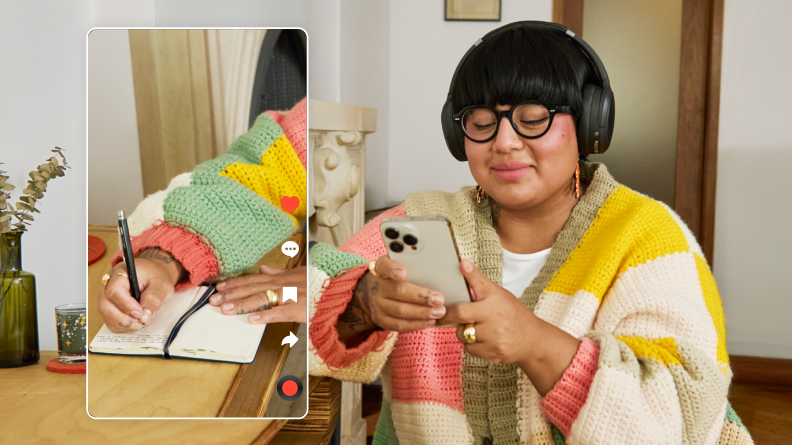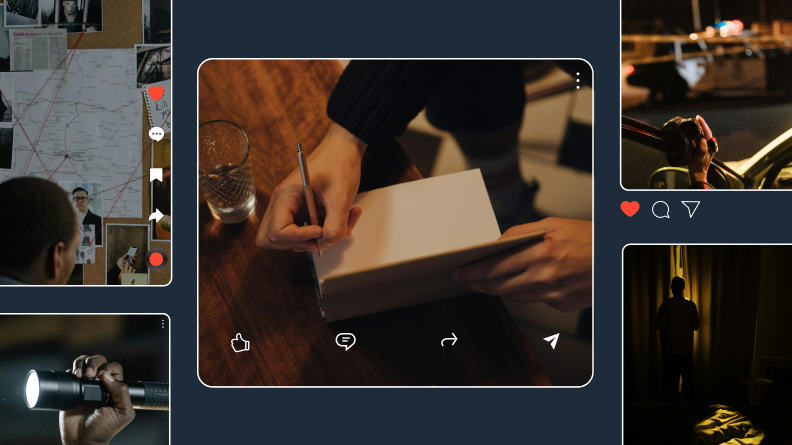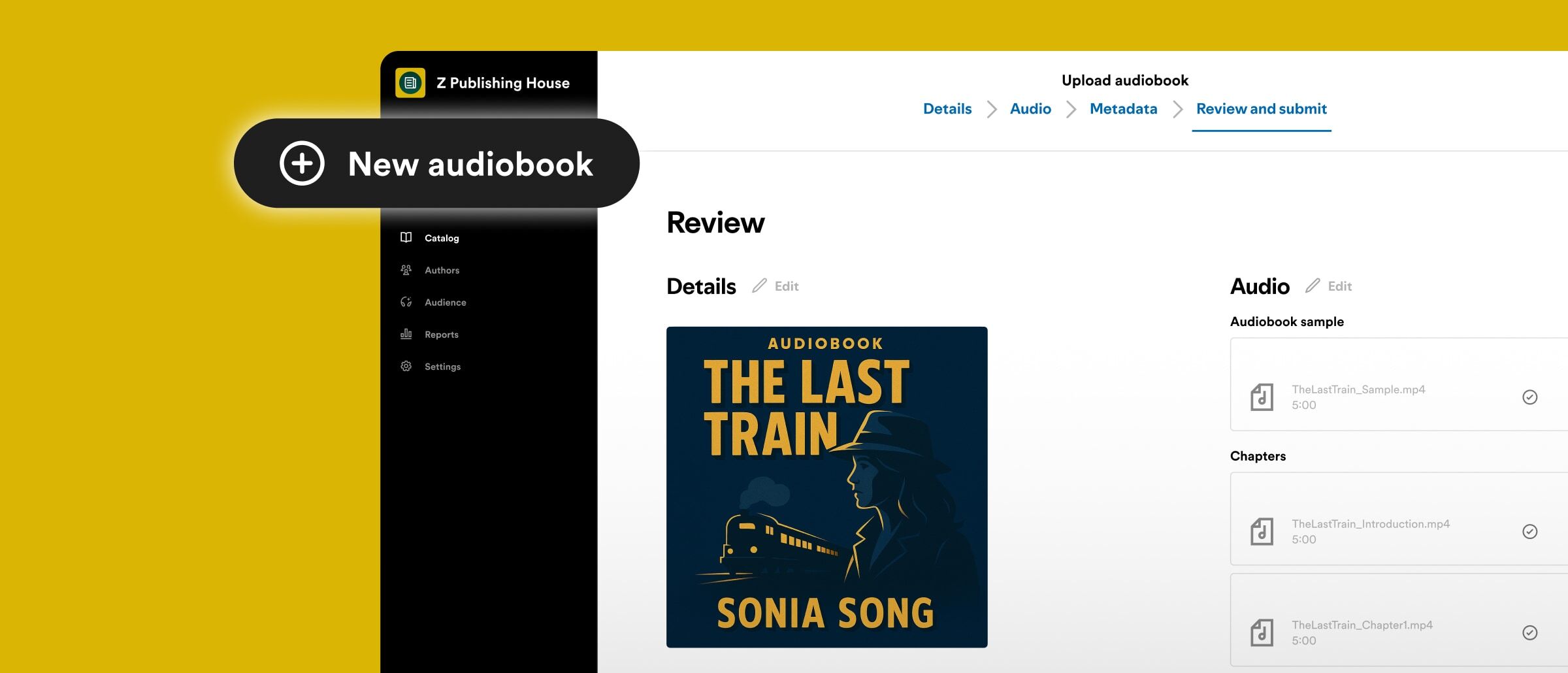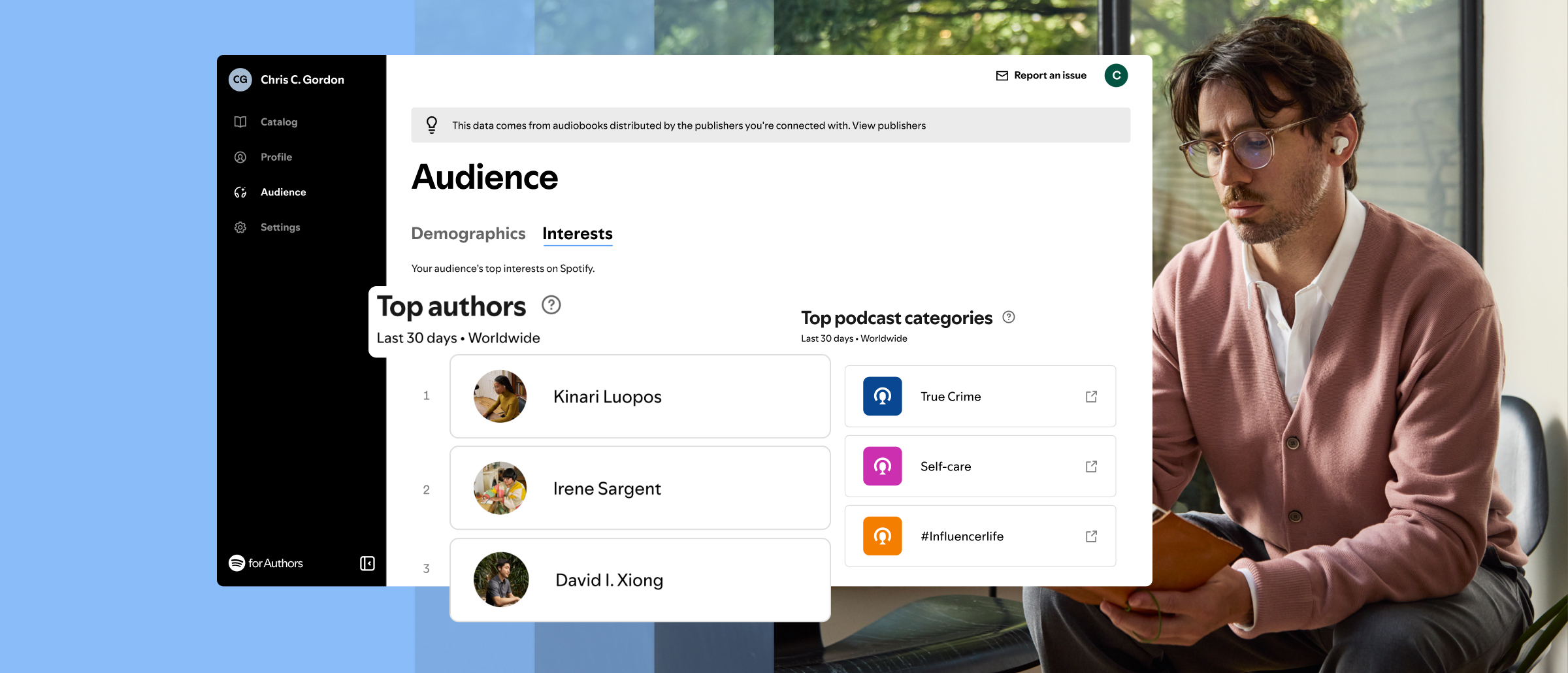Social media for authors: How to build a genuine online presence

Books are having a moment on social media. Reading communities are thriving across platforms, whether it's BookTok's rapid-fire recommendations, Instagram's aesthetic reading nooks, or YouTube's deep-dive reviews.
This is great news for authors. A surge in online book culture creates natural opportunities to connect with readers who are looking for the next story to sink their teeth into.
Still, you might be wondering if you really need to dance on TikTok to sell books (you don't). Or you may be overwhelmed by the sheer number of platforms out there.
The truth is, you can do what you do best and write your own social media story. We have the key plot points to get you started, but the narrative voice? That's all yours.
Getting started with (or improving) your social media presence
Every author's path to connecting with readers online looks different, and that's exactly how it should be. Before diving into specific platforms, let's focus on two foundational elements: defining your unique author brand and discovering where your ideal readers already gather.
Who's your audience, really?
Not all social media platforms are created equal, and neither are their users. Young adult readers might gravitate toward TikTok, while 50+ demographics tend to engage more on Facebook. If you understand these platform dynamics, you'll be poised to focus your efforts where they'll have the most impact.
So consider your books' core elements, like genre, themes, and natural audience. You can also look at where similar authors in your niche are finding success (just don't feel pressured to copy their approach entirely).
For channels where you already have a presence, built-in analytics can tell you a lot about who engages with your content. If you find your work resonates strongly with a particular demographic or interest group, consider exploring platforms where similar audiences gather. For example, a successful Instagram presence might point you toward TikTok, while X (Twitter) discussions could suggest untapped potential in LinkedIn's professional community.
And don't overlook the direct approach. Your existing readers are often happy to tell you where they spend their time online and what content interests them most. A quick poll in your email newsletter can reveal interesting preferences you might never consider on your own.
Building your author brand (without losing yourself)
"Author brand" might sound like marketing jargon, but it's really just about being consistent across all your platforms. What does consistency look like in practice, you may ask? Small details are a good start. A polished profile photo and colors that complement your book covers create an intentional, cohesive presence across platforms.
But while visual elements are important, they're not the most powerful aspect of your brand. Your authentic voice is. Maybe you're a witty observer, a thoughtful guide, or a curious researcher. Whatever defines you, let it shine through. Your readers aren't looking for perfection or polish, just a genuine connection with the person behind the books they enjoy.
Your brand will naturally evolve as you do, but staying true to your voice and values is what turns casual readers into a community of engaged fans.

Platform breakdown: The who's what of social media channels
You don't need to be everywhere on social media. However, knowing each platform's strengths and audience patterns will help you find your perfect match. Let's look at the different ways you can share your writing life and connect with readers across major channels.
Instagram is great if you're trying to reach millennials and Gen Z readers who value authenticity. This visually-led platform rewards creativity and consistent aesthetics, but don't let that intimidate you! Even simple, well-lit photos can perform well if they tell an engaging story.
Instagram tends to attract users who enjoy lifestyle content, visual inspiration, and personal connections with creators. Its main features include:
- Feed posts. Permanent photos or carousel posts (more than one photo per post) that appear on your profile grid and followers' feeds. The latter can include up to 20 images or videos per post, with each video limited to 60 minutes. Posts remain visible indefinitely unless deleted and support features like location tagging, user tagging, and detailed captions.
- Stories. Temporary photos and videos that disappear after 24 hours. Each story clip can be up to 60 seconds long, and users can add interactive elements like polls, questions, music, and stickers. Stories can be saved as "Highlights" on your profile to remain visible beyond the 24-hour window.
- Reels. Short-form vertical videos lasting up to 90 seconds. Instagram provides editing tools like music, effects, text overlays, and transitions. Reels appear on your profile, followers' feeds, and the Explore page, and they remain visible indefinitely unless you delete them. You can also remix other users' Reels to create collaborative content.
Visual storytelling that builds atmosphere
Your tales are beautiful worlds of their own, and you can use Instagram to bring them to life through a visual medium. Think about the mood and themes of your work, and how you can represent them through color, composition, and setting. For instance, you may:
- Stage your books in settings that reflect their mood (e.g. darker lighting for thrillers, bright botanicals for contemporary romance)
- Create themed flat lays that incorporate elements from your stories (e.g. maps and compasses for adventure novels, vintage items for historical fiction)
- Share location shots that inspired scenes in your books
- Create audiobook listening setups with headphones, cozy blankets, and your book cover
Behind-the-scenes glimpses that humanize your work
Readers love seeing the reality of an author's life. The messy drafts, the late-night writing sessions, the research rabbit holes…these authentic moments help your fans feel connected to both you and your work, building the kind of loyalty that lasts beyond a single book.
You could share:
- Your writing space throughout different stages of a project
- Research rabbit holes and inspiration/mood boards
- Notebook pages and planning systems
- Writing sessions and workspace changes
- Piles of editing marks and revision notes
- Voice actor selection process for your audiobook
- Recording booth setup and sound engineering process
- Snippets of your audiobook recording process or studio sessions
Engaging visual content that promotes your work
While direct promotion shouldn't dominate your feed, creative ways to showcase your books can be both engaging and effective. Try to make these promotional moments feel like natural extensions of your storytelling. For example, you could share:
- Quote cards featuring memorable lines with on-brand designs
- Cover reveal countdowns with teaser text
- Character mood boards and aesthetic collages
- Progress trackers for your current work-in-progress
- Screenshots of positive reviews
- Audiogram snippets from your audiobook with captions
Reels that offer a glimpse into your life as an author
Short-form video doesn't have to mean dancing or trending sounds. You can create quick, engaging glimpses into your world that add value for your readers, such as:
- Quick tours of your bookshelf or writing space
- Day-in-the-life glimpses of your writing routine
- Time-lapse videos of your writing or editing process
- Mini-book trailers with atmospheric music
- Voice actor introductions and recording snippets
- Audiobook listening recommendations and setups
Stories that foster real-time engagement
Instagram Stories are perfect for those informal, in-the-moment connections that make social media feel personal. Their 24-hour lifespan means you can be more spontaneous and experimental with your content. Content you can share here includes:
- Polls about character names, plot directions, or narrator choices
- Q&A sessions about your books or writing process
- Screenshot reactions to reader messages
- Quick updates about your current project
- Behind the scenes at events or writing and recording sessions
- Countdown stickers for book launches or reveals
- Audio snippets from recording sessions
TikTok
While this particular platform's future may be in flux in the US, #BookTok is still going strong all around the globe (#BookTok being the organic community within TikTok where book lovers gather to discuss their favorite reads, share reviews, and recommend books. Every post is tagged with #BookTok so users can easily find and engage with book-related content within the app).
TikTok is often dismissed as just a dancing app, but let's not forget #BookTok has become a whole movement that's literally moving books off shelves. Its highly engaged audience of young readers can turn casual, rapid-fire recommendations into viral sensations with a single video.
Short, engaging content that entertains or educates thrives on TikTok. Thanks to a powerful algorithm, even creators with smaller followings can reach large audiences.
Quick, engaging book teasers
TikTok's format is ideal for creating anticipation around your books. You just have to try and make videos that grab attention in the first few seconds. For example, you could:
- Create mini-trailers with trending sounds that match your book's mood
- Film dramatic readings of powerful scenes
- Use popular transitions to reveal your cover or key story elements
- Share snippets from audiobook recording sessions
- Create atmospheric "POV: you're listening to my audiobook" scenarios
Behind-the-scenes content
TikTok audiences love seeing how things come together. The raw, unpolished nature of these videos often performs better than highly edited content, which is perfect for authentic author content.
YA fantasy author Katie Cross, for example, loves to go live on TikTok while she's narrating her audiobooks. "People can listen to me recording, and then they get to be part of the audiobook process," she explains. "It's really, really fun to watch it happen and be part of it."
Other exciting behind-the-scenes content you may experiment with includes:
- Showing your writing process from a blank page to a finished scene
- Taking viewers through your research rabbit holes
- Filming "Day in the Life of an Author" videos
- Documenting your publishing journey milestones
Creative story-based content
Use TikTok's features to bring your stories and characters to life in new ways to help readers connect with your work. For example, you can:
- Film character POV scenarios
- Share plot twists using popular transition effects
- Use trending sounds to represent different characters or scenes
- Share the process of developing voices for each of your audiobook characters
Facebook is a popular platform for readers, especially those who love discussing books in depth. Plus, its Groups feature can be useful for building and nurturing reader communities.
Groups, your community hub
Facebook Groups gives authors something other platforms can't match: dedicated spaces for focused discussion and community building. Katie describes her group, "Witchery," as "a gathering place for the readers to congregate and share memes or beautiful pictures of dresses they wish they could wear." This is also where she shares exclusive content that other platforms don't see, further rewarding the most active members of her fanbase.
Examples of what you can share in your own Facebook group include:
- Exclusive snippets from work-in-progress chapters
- Early cover reveals before the public announcement
- Weekly writing updates with word count celebrations
- Polls for character names or minor plot decisions
- Q&A sessions about your books and writing process
- Special audiobook content like narrator interviews or bloopers
- Writing location photos and inspiration spots
- Personal milestone celebrations with your most dedicated readers
- In-depth character and plot discussion threads
Event organization and promotion
Facebook Events is a way to organize and promote both virtual and in-person gatherings. You can leverage this feature to:
- Create virtual book launch events
- Organize online reading parties
- Schedule live reading sessions
- Coordinate book signing tours
- Arrange meet-and-greets with audiobook narrators
It might not be the first channel you think of for book marketing, but LinkedIn can be quite valuable for non-fiction authors and those writing in professional development genres. The platform's professional audience actively seeks expert insights and industry knowledge, so it's great for establishing your authority in your field.
LinkedIn rewards thoughtful, long-form content that provides genuine value to its audience, particularly when you share personal experiences and lessons learned along your professional journey. Users increasingly respond to authentic stories about overcoming challenges, navigating career transitions, and learning from failures.
Unlike other channels, promotional content feels more natural here—as long as it's framed within your expertise and industry insights.
Articles that demonstrate your expertise
LinkedIn's article feature lets you publish in-depth content directly on the platform. This could be a great chance to demonstrate the knowledge that informs your books. You may:
- Share insights related to your book's topics
- Break down complex concepts from your work
- Write about industry trends you explore in your books
- Share research findings and case studies that shaped your work
- Discuss the business side of your author journey
- Tag or mention collaborators who are also on LinkedIn and whose target audience overlaps with yours
Professional updates that build credibility
Try to share posts that position you as an active voice in your field while subtly promoting your work. To that end, you might:
- Share speaking engagement announcements
- Post about podcast appearances and interviews
- Highlight media coverage of your work
- Share industry awards or recognition
- Share testimonials from readers
Behind-the-scenes content with a professional angle
While LinkedIn is professional, it still values authentic glimpses into your work process. Here, you can:
- Document your research methodology
- Share your writing or publishing journey insights
- Discuss collaboration with experts in your field
- Highlight professional partnerships

How to make social media work for you
You don't need thousands of followers or endless posts to build a thriving online presence. Here's how to create genuine connections with readers without losing your mind (or all your writing time).
Remember that engagement is a two-way street
Social media algorithms reward genuine interaction, not just random emojis or quick "thanks!" replies. When readers comment, try to engage with them thoughtfully. You can share personal experiences, dig deeper into their thoughts, or add context to your replies. If someone says they love your character's wit, share what inspired that trait.
And don't just react—initiate. Questions like "What's your favorite reading spot?" spark more discussion than book cover reveals (though there's still a place for them!) The most engaging authors aren't just broadcasting, they're actively participating in their community's discussions.
Balance promotion with heart
You're on social media partly to sell books, and your followers know this. But if every post screams, "Listen to my audiobook!" you'll put potential readers off. Try to find the sweet spot and make promotion feel like a natural part of your content, not its sole purpose.
As a benchmark, you can use the 80/20 rule: keep 80% of your content focused on adding value or entertainment for your readers. People love seeing how the sausage is made, so you could take them behind the scenes of your writing process, research adventures, or editing struggles. Maybe even share your milestones, whether it's hitting a writing goal or finishing your first draft.
If you want to share your audiobook with early listeners and influencers, Spotify for Authors lets you distribute royalty-free copies to bloggers, reviewers, and superfans with our "Redemption Codes" feature. And if you're looking for engaging visuals to promote your audiobook more widely, Spotify's Promo Cards tool makes it easy to create custom, on-brand graphics in just a few clicks. You can choose from a range of sizes and background colors, then share them across your social media channels or include them in your newsletter. Plus, it will help you attract Spotify Premium subscribers who already pay for Spotify and are more likely to explore your work at no extra cost.
When readers feel part of your journey, they're more likely to support your work when that promotional 20% rolls around.
Measure what matters
Don't get caught up on vanity metrics. Having 100 followers who regularly interact with your content beats having 10,000 who scroll past it every time.
Instead, pay attention to the quality of engagement you're getting. Meaningful comments indicate a deeper connection with your content than likes ever will. Plus, they give you insight into what resonates with your readers—when people save or share your posts, it means they found them valuable enough to revisit or pass along.
As much as you can, try to look at metrics that show people want to connect with you beyond social media, such as:
- Click-throughs to your website or book links
- Comment quality and conversation depth
- Save and share rates
- Direct messages and newsletter signups
Start small, and then keep growing
If you take one lesson from this article, let it be this: you don't need to be everywhere. Trying to maintain a presence on every platform is a recipe for burnout, and it's better to be amazing on one channel than mediocre on five.
Choose one or two platforms that align with your strengths and where your ideal readers already gather. Master them. Let yourself experiment, learn what works, and build genuine connections. Once you've found your rhythm there, you can consider expanding to other channels—but only if it serves your goals and you have the bandwidth to maintain quality.
Sustainable growth comes from authentic engagement, not from spreading yourself too thin. Start small, and grow where it makes the most sense for you.
Start Building Your Author Brand Today
Create a Spotify for Authors account to get started.


